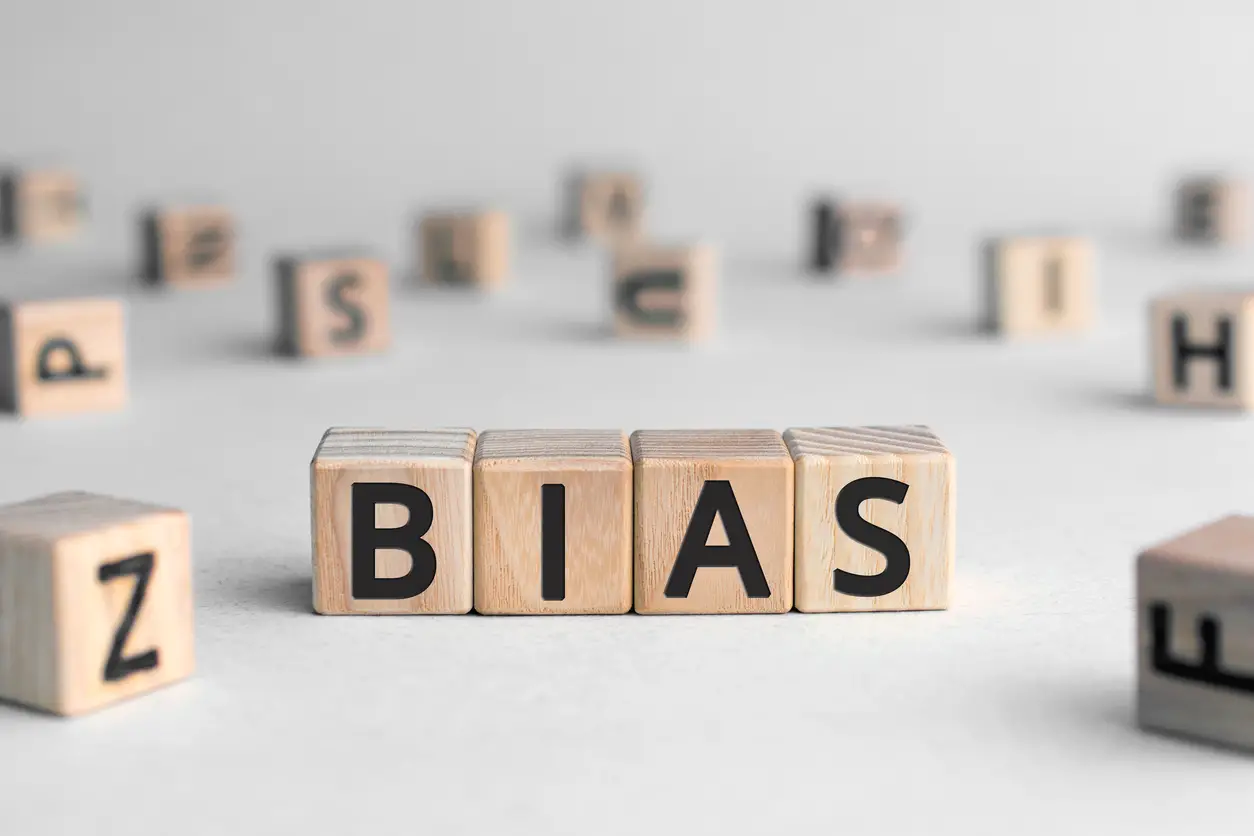Hindsight bias is a psychological phenomenon that occurs when people believe they knew the outcome of an event before it happened. It is often referred to as the “knew-it-all-along” phenomenon, and is a common cognitive bias that affects our perception of past events. The occurrence of hindsight bias can impact various aspects of our lives, including decision-making, and cause us to overestimate our own predictive abilities.
In psychology, hindsight bias is considered a type of confirmation bias, which influences our memory of past events and leads to distorted thinking. It is crucial to understand the concept of hindsight bias to recognize its effects on our judgments and to improve our decision-making processes.
Key Takeaways
- Hindsight bias refers to the tendency to believe that one could have predicted an event’s outcome after it has occurred
- It is a common cognitive bias in psychology and can have significant implications on decision-making processes
- To counteract hindsight bias, it is essential to acknowledge its presence and strive for more objective evaluations of past events
Understanding Hindsight Bias
Hindsight bias is a cognitive phenomenon that causes people to believe they could have accurately predicted an event’s outcome after it has already occurred. This type of bias falls under the category of cognitive biases, which are systematic errors in thinking and perception that affect decision-making.
The hindsight bias can make events seem more predictable than they truly were, leading to overconfidence in one’s ability to foresee outcomes. As a result, individuals may assume they knew the outcome of an event before it actually happened. This phenomenon is also known as the “knew it all along” effect.
An important aspect of hindsight bias is its impact on how people interpret and learn from past events. When an outcome appears predictable in hindsight, individuals may underestimate the complexity of the situation or overlook critical information that was not apparent at the time. This can lead to overgeneralization of lessons learned and a false sense of confidence in future predictions.
Several factors can influence the magnitude of hindsight bias. One such factor is the availability of information – when people have more access to information about an event after it has occurred, hindsight bias is more likely to occur. Another contributing factor is the desire for consistency, as individuals may find it uncomfortable to acknowledge their initial predictions were incorrect.
To mitigate hindsight bias, it is essential to recognize its presence and actively consider alternative explanations and scenarios. Documenting predictions and their justifications before an event can provide a more accurate basis for evaluation when reviewing the outcome. Furthermore, considering multiple perspectives and seeking feedback from others can help counteract biases and improve decision-making.
Hindsight bias is an important concept to understand, as it can affect how individuals evaluate their own and others’ decision-making abilities. Recognizing this cognitive bias and taking steps to reduce its impact can lead to more accurate understanding of events and better-informed decisions in the future.
Hindsight Bias Examples
Hindsight bias is a cognitive bias that leads people to believe, after an event has happened, that they knew or predicted the outcome ahead of time. This can happen in various aspects of life, such as sports, politics, and decision-making.
For instance, in the world of sports, a common example is when a fan claims, after a game, that they knew their favorite team would lose the match even though they did not feel that way before the game. This type of thinking can skew their analysis of the game and their evaluation of the team’s future performance.
Another area where hindsight bias appears is in politics and elections. After an election result is declared, voters may claim they knew a particular candidate would win or lose based on their perception of the political climate before the election. This can lead to a false sense of understanding about the factors that actually influenced the election outcome.
In investment and finance, hindsight bias can lead individuals to overestimate their ability to predict market trends and make successful investment decisions. After a stock does well, an investor might believe they knew it would perform strongly, while they may not have had such confidence at the time of investment. This feeling of knowing the outcome ahead of time can cause overconfidence in their decision-making process, potentially leading to poor future investment choices.
Within the context of accidents and tragedies, hindsight bias can also contribute to assigning blame inappropriately. For example, after a car accident, people may claim that they predicted the crash was inevitable due to the driving conditions or the behavior of the driver. However, in reality, they may not have perceived any risk before the accident occurred.
In summary, hindsight bias can manifest in a variety of situations, often prompting individuals to assume they had prior knowledge or insight into an event’s outcome. This cognitive distortion can impact decision-making, assessments, and judgments in different areas of life, altering people’s perceptions of reality and influencing their future decisions.
The Psychology behind Hindsight Bias
The Confirmation Bias Connection
Hindsight bias is a psychological phenomenon that is closely related to confirmation bias. Confirmation bias is the tendency to search for, interpret, and remember information in a way that confirms one’s preexisting beliefs. In the context of hindsight bias, this means that people often remember their predictions about an event’s outcome as being more accurate than they actually were. This occurs because individuals tend to selectively recall information that supports their beliefs and dismiss information that contradicts them.
Overconfidence and Decision-Making
A major consequence of hindsight bias is overconfidence in one’s ability to predict future events and make accurate decisions. This overconfidence can lead to poor decision-making, as people may underestimate the risks associated with certain choices, assuming that they have a better understanding of the situation than they actually do. As people overestimate their ability to foresee the past, they may also overestimate their ability to predict future outcomes and manage complex situations.
Memory Distortion and Perception
Hindsight bias also involves memory distortion, which occurs when people unconsciously alter their memories of past events to fit their current knowledge and beliefs. This is a natural coping mechanism that helps individuals make sense of their experiences and maintain a consistent self-concept. However, this distortion can lead to biased perceptions of reality and ultimately impact the way people understand past events and make decisions.
In summary, hindsight bias is a psychological phenomenon that can influence beliefs, decision-making, and perceptions of past events. It stems from confirmation bias and is closely tied to overconfidence, memory distortion, and perception. Understanding this bias is essential for recognizing its impact on thought processes and navigating complex situations effectively.
Hindsight Bias across Different Ages
Hindsight bias is the tendency to perceive past events as more predictable than they actually were, leading people to believe that their judgment is better than it is. This bias can result in unnecessary risks or overly harsh judgments of others. It is colloquially known as the “I knew it all along” phenomenon and is a type of confirmation bias.
Research has shown that hindsight bias can be present in individuals of various ages. A study involving participants aged 3 to 95 years old found that hindsight bias can be observed across the entire age range. However, certain factors, such as inhibitory control, may contribute to age-related differences in hindsight bias.
For example, a life-span study focusing on cognitive processes underlying hindsight bias identified that age-related differences may be based on how well individuals can inhibit their hindsight bias. The study, which involved 9-year-olds, 12-year-olds, young adults, and older adults, found that inhibitory control plays a role in the ability to counteract hindsight bias.
In a college setting, hindsight bias can have implications on students’ decision-making and learning processes. College students, who are often in their late teens or early twenties, might be particularly vulnerable to hindsight bias due to their developing inhibition skills. This can lead to overconfidence in their judgments and a decreased ability to learn from their mistakes.
In conclusion, hindsight bias can be present across various age groups, from young children to older adults. Factors such as inhibitory control can help explain the differences in hindsight bias across different ages. College students, in particular, should be aware of the potential pitfalls of hindsight bias in their decision-making and learning processes.
Hindsight Bias in Electoral Procedures
Hindsight bias is a cognitive phenomenon where people overestimate their ability to predict outcomes after knowing the outcome. In the context of electoral procedures, this bias can affect our perceptions of election results, political decisions, and even the appointment of Supreme Court nominees. This section will discuss the impact of hindsight bias on these aspects in a confident, knowledgeable, neutral, and clear manner.
During election periods, voters often express strong opinions about who will win a race, such as the U.S. Senate elections. When the results are announced, some individuals may claim that they “knew it all along,” even though, in reality, the outcome was not as predictable as they thought. This occurrence is an example of hindsight bias playing a role in electoral procedures.
Moreover, hindsight bias can also influence our evaluations of political decisions. For instance, if a policy or decision were to have negative consequences, people might be quick to criticize those involved and insist they should have seen it coming. However, this appraisal may be a result of hindsight bias and not a fair assessment of the actual predictability of the event. An example from the search results that emphasize hindsight-biased evaluation of political decision-makers can be referred to for more information.
Finally, the appointment of Supreme Court nominees may also be subject to the effects of hindsight bias. When a nominee’s decisions and opinions are scrutinized after their confirmation, individuals may claim that they anticipated certain rulings or legal positions. But, again, hindsight bias may be affecting their perception of the actual predictability of such outcomes.
In summary, hindsight bias can influence our understanding and evaluation of various aspects of electoral procedures, including election results, political decisions, and Supreme Court appointments. Being aware of this bias can help in approaching these matters with a more balanced perspective and avoiding the pitfalls of overconfidence in hindsight.
Financial Decision Making and Hindsight Bias
Hindsight bias is a type of cognitive bias that causes people to convince themselves that a past event was predictable or inevitable after it has already occurred. In the context of financial decision making, hindsight bias can lead individuals to overestimate their ability to predict investment outcomes and manage risks effectively.
When investing, there is often uncertainty and numerous factors that can influence the success or failure of a financial decision. Hindsight bias can cause investors to believe that they should have foreseen certain market movements or risks, leading them to feel overconfident in their abilities and potentially making riskier investments based on this false perception of their predictive skills.
One effective way to manage hindsight bias in financial decision making is to maintain a decision journal, which serves as a tool for documenting the decision-making process during investment decisions. By recording investment rationales, expected outcomes, and risks, a decision journal can provide important context and perspective for future evaluations of investment decisions.
Utilizing a decision journal can also help investors reflect on their decision-making processes and identify areas for improvement. Regularly reviewing the journal can lead to more accurate assessments of one’s skills, helping to foster a healthy balance of confidence and humility in financial decision making.
In summary, hindsight bias can distort the perceptions of investors when evaluating their financial decisions, causing them to overestimate their predictive abilities and potentially take on greater risks. To overcome this cognitive bias, using techniques such as maintaining a decision journal and engaging in regular self-reflection can be valuable tools to foster more accurate assessments and promote informed financial decision making.
The Availability Heuristic and Representativeness Heuristic
Heuristics are mental shortcuts that help individuals make quick and efficient decisions. Two common types of heuristics are the availability heuristic and the representativeness heuristic. Both play a role in shaping an individual’s perception of the likelihood of events, even though they operate differently.
The availability heuristic influences decision-making by allowing individuals to estimate probability based on how easily examples or instances come to mind. In other words, the more readily an event can be recalled, the more likely it seems to occur. However, this heuristic can lead to biases as memorable or recent events might not be representative of the overall situation.
For example, after hearing about a series of plane crashes on the news, one might overestimate the likelihood of being involved in a plane crash. This overestimation occurs because the vivid and recent memories of plane crashes are more readily available, ignoring the fact that statistically, air travel is safer than other modes of transportation.
On the other hand, the representativeness heuristic involves making decisions based on how similar an event or object is to an existing mental prototype. People tend to believe that events that closely resemble their mental prototype have a higher probability of occurring, which can sometimes lead to biases and incorrect judgments.
An example of the representativeness heuristic in action would be assuming that a person who is quiet and introverted is more likely to be a librarian than a salesperson. This assumption is based on the stereotype that librarians are typically introverted, while salespeople are usually more outgoing. In reality, quiet and introverted individuals can be found in both professions, and making a decision based on this stereotype could lead to inaccurate predictions.
In conclusion, both the availability heuristic and the representativeness heuristic are important factors in shaping individuals’ decisions and perceptions of probability. Becoming aware of these cognitive shortcuts and their potential biases can help people make more informed decisions and avoid misjudgments.
Studies on Hindsight Bias
Various studies and experiments have been conducted to understand the effects and implications of hindsight bias in different scenarios. One of the most well-known studies is the Fischhoff experiment, where participants were asked to predict outcomes of events, and later, after knowing the actual outcomes, were asked to recall their earlier predictions. The results demonstrated that people tend to overestimate their ability to predict outcomes, indicating the presence of hindsight bias.
In the field of psychology, hindsight bias has been researched to study its effects in decision-making and behavior. Researchers have found that hindsight bias can lead to an overconfidence in one’s ability to predict and an underestimation of the unpredictable nature of events. A study in SAGE Journals by Neal J. Roese and Kathleen D. Vohs sheds light on the cognitive mechanisms underlying hindsight bias and its consequences in various domains, such as medicine, law, and sports.
Moreover, a recent study published in Current Psychology explored the role of perspective-taking in hindsight bias. The authors, in this study, focused on how perspective-taking changes the hindsight bias when the target of prediction is oneself or a peer. Here, researchers discovered that perspective-taking reduced hindsight bias to a certain extent, highlighting the importance of considering others’ perspectives in mitigating hindsight bias.
Additionally, hindsight bias is also seen to impact financial decision-making, where investors may believe they could have predicted the market trends retrospectively. Such biases affect their ability to make accurate financial decisions, as they develop a false sense of confidence in their predictive capabilities.
These studies collectively offer valuable insight into how hindsight bias can alter our perception of past events and potentially influence our future decision-making. By understanding this cognitive bias, researchers and practitioners can develop strategies to minimize its effects and improve decision-making processes.
Counteracting Hindsight Bias
The Role of Metacognitive Awareness
One way to counteract hindsight bias is by enhancing metacognitive awareness. Metacognition refers to a person’s ability to reflect on their own thought processes, evaluating the accuracy of their judgments and the reliability of information sources. People who are more metacognitively aware are less likely to assume that they “knew it all along” when presented with new information. To improve metacognitive awareness, individuals can practice:
- Actively questioning their beliefs and predictions
- Seeking diverse perspectives and opinions
- Engaging in critical thinking and self-reflection
Adaptive Learning and Uncertainty
Embracing adaptive learning and uncertainty can be another effective strategy for counteracting hindsight bias. Adaptive learning involves updating one’s beliefs and knowledge based on new information and experiences. When individuals are open to learning from their changing environments and accept that future events are often uncertain, they are less likely to retrospectively overestimate their ability to predict outcomes. To cultivate adaptive learning:
- Recognize that new information can alter the reliability of past judgments
- Accept that uncertainty is an inherent aspect of many situations
- Emphasize continuous learning and growth over maintaining the illusion of control
Use of Anchoring Technique
An additional method for reducing hindsight bias is the anchoring technique. Anchoring involves setting a reference point or starting point for an estimate or prediction, then adjusting that initial value based on subsequent information. By establishing an anchor, individuals can more easily track how their opinions or predictions change over time, providing a concrete basis for comparison. To effectively implement the anchoring technique:
- Establish a clear starting point for estimations or predictions
- Document any changes or adjustments made in response to new information
- Regularly review the anchor to maintain a more objective perspective on the development of judgments
In conclusion, hindsight bias can affect the way people perceive events and make decisions. By developing metacognitive awareness, embracing adaptive learning, and using anchoring techniques, individuals can work towards counteracting this cognitive bias and improving their decision-making processes.
Hindsight Bias and Emotional Consequences
Guilt and PTSD after Trauma
Hindsight bias can have significant emotional consequences for individuals who have experienced traumatic events, such as natural disasters, accidents or sexual assault. This cognitive distortion may lead survivors to believe that they could and should have predicted or prevented the event from occurring. As a result, individuals may experience feelings of guilt and self-blame, which can contribute to the development of post-traumatic stress disorder (PTSD).
For example, some survivors may focus on specific decisions they made before the traumatic event, such as their choice of location or behavior, and perceive them as foolish in hindsight. This can lead to rumination and negative thought patterns as they blame themselves for something they could not have truly predicted. It is essential for trauma survivors to recognize hindsight bias as a common cognitive distortion and practice compassion towards themselves, letting go of self-blame and embracing self-care.
Depression and Regret in Relationships
In the context of personal relationships, hindsight bias can also play a detrimental role by intensifying feelings of regret and sadness. When individuals analyze past disputes, breakups, or failed relationships, hindsight bias may lead them to view certain decisions or actions as obvious mistakes, even if they were not predictable or preventable at the time.
This distortion can create a sense of helplessness and despair, potentially contributing to the onset or worsening of depression. Moreover, hindsight bias can impede personal growth and acceptance, as individuals may become fixated on correcting perceived past mistakes instead of focusing on learning from their experiences and moving forward.
To mitigate the emotional consequences of hindsight bias in relationships, cultivating self-awareness and self-compassion is crucial. Acknowledging that past events were not as predictable as they may appear in retrospect can help individuals forgive themselves and others, fostering healthier and more resilient emotional responses to life’s challenges.
Hindsight Bias in Behavioral Economics
Hindsight bias, often referred to as the “knew-it-all-along” effect, is a cognitive bias that causes individuals to see past events as more predictable than they were at that time. This bias can influence decision-making processes, leading to overconfidence in one’s ability to predict outcomes.
In the context of behavioral economics, hindsight bias has significant implications for understanding risk-taking and decision-making. When individuals perceive past events as foreseeable, they may also feel more confident about predicting the outcomes of future events. This increased confidence can lead individuals to make riskier decisions because they incorrectly believe they have a better understanding of the potential consequences.
Moreover, hindsight bias affects how people evaluate the decision-making abilities of others. For example, if someone makes a bad investment, others might judge them as incompetent or foolish because they believe the poor outcome was foreseeable. In reality, predicting the stock market or other complex systems is challenging and often impossible. Overconfidence resulting from hindsight bias can lead investors to make errors in their judgment and assessments of perceived risks.
Due to the pervasiveness of hindsight bias, it is essential to recognize and mitigate its effects. In behavioral economics, this bias may contribute to irrational behaviors or suboptimal decisions. Identifying this cognitive error and implementing strategies such as considering alternative outcomes and challenging one’s assumptions can lead to more accurate assessments and better decision-making.
In summary, hindsight bias is a common cognitive phenomenon that significantly impacts decision-making processes in behavioral economics. By recognizing this bias and employing strategies to counteract its effects, individuals can make better-informed decisions and mitigate the impact of risky behaviors.
Hindsight Bias in Legal Outcomes
Hindsight bias, also known as the I knew it all along phenomenon, is a cognitive bias that causes people to overestimate their ability to have foreseen an event’s outcome after learning about it. This bias can significantly impact legal outcomes, particularly in cases involving victims, foreseeability, malpractice lawsuits, and accidents.
In legal proceedings, the hindsight bias may affect the way jurors and judges perceive the actions of those involved in an accident or a malpractice lawsuit. For example, when a victim is injured in an accident, hindsight bias might lead the jury to believe that the responsible party should have been able to foresee and prevent the accident. This can lead to unfair judgments and disproportionate penalties for the accused.
Similarly, in malpractice lawsuits, hindsight bias can have a significant influence on the evaluation of the defendant’s actions. For instance, a physician might have made a decision based on the information available at the time, but when presented with the negative outcome in court, jurors or judges may believe that the medical professional should have known better. This may result in undue blame and liability on the professional, despite them acting in good faith and with reasonable care.
To mitigate the impact of hindsight bias in legal contexts, attorneys and expert witnesses should try to provide objective evidence and reconstruct the original circumstances surrounding the event. By exposing jurors and judges to the conditions and limitations present at the time, they may perceive the actions of the parties involved more accurately, leading to fairer outcomes.
Additionally, the legal system must be aware of the potential pitfalls of hindsight bias when assessing foreseeability in questions of negligence. Just because an outcome seems obvious in hindsight does not mean it was foreseeable in the actual context, and this should be carefully considered by all parties involved in the legal process.
In conclusion, hindsight bias has the potential to significantly affect legal outcomes, leading to potentially unjust consequences for victims, defendants, and professionals involved in accidents and malpractice lawsuits. By being aware of and addressing this cognitive bias, the legal system can strive towards more equitable outcomes for all parties involved.
Cultural and Societal Implications of Hindsight Bias
Hindsight bias has significant cultural and societal implications, which can manifest in various domains, such as judging the inevitability of specific events, influencing the outcomes in movies, affecting criminal investigations, and altering our intuition about potential outcomes.
One of the primary implications of hindsight bias is the sense of inevitability, where people often perceive past events as more predictable than they were. This phenomenon can lead to an oversimplification of complex situations and negatively impact learning and decision-making, hindering our ability to effectively analyze similar situations in the future.
In the world of movies and entertainment, hindsight bias can influence how creators construct narratives and how audiences interpret them. For example, when crafting a suspense thriller, screenwriters and directors might create implausible scenarios, knowing that hindsight bias will cause viewers to find them more believable after the fact. This can create a fulfilling cinematic experience where the audience feels like they should have seen the twist or reveal coming but didn’t.
Hindsight bias can also affect criminal investigations and legal proceedings. Investigators may fall prey to the bias, assuming that because a crime seems predictable in hindsight, the perpetrator’s guilt is more apparent than it may be. This can result in wrongful convictions or oversights in investigations. Juries can be susceptible to hindsight bias too, leading them to believe that the defendant should have foreseen the consequences of their actions when, in reality, things were less clear at the time.
When examining potential outcomes, hindsight bias can lead individuals to overestimate their own intuition and predictive abilities. This tendency can be misleading as people might fail to explore alternative outcomes or underestimate the complexity of future events. Moreover, it may prompt false confidence, which can hinder effective decision-making and lead to unfavorable outcomes.
In conclusion, hindsight bias has notable implications for various aspects of our lives, from cultural narratives to societal decision-making. By understanding and addressing this bias, individuals and society can develop more accurate perceptions and make better-informed choices.
Frequently Asked Questions
In which fields is hindsight bias most prevalent?
Hindsight bias is most prevalent in fields where decision-making and analysis of past events play critical roles. This can include areas such as psychology, finance, sports, politics, and medicine. People in these fields often look back on events and perceive them as more predictable than they actually were, leading to overconfidence and misguided decisions in the future.
How does hindsight bias affect decision-making?
Hindsight bias affects decision-making by causing individuals to overestimate their ability to predict outcomes and make accurate decisions. This overconfidence can lead to poor choices, as people may place too much trust in their judgments without considering alternate possibilities or seeking input from others. Additionally, hindsight bias can create an illusion of control over outcomes, obscuring the role of chance and other factors in the decision-making process.
What are some common examples of hindsight bias?
Common examples of hindsight bias include the belief that the outcome of an event, such as an election or a sports game, was predictable after it has happened, even though it was uncertain beforehand. Another example is when people look back on their own decisions, believing they knew the best course of action all along, despite having had limited information at the time.
How can hindsight bias impact financial decision-making?
In the world of finance, hindsight bias can lead to several problems, such as overconfidence in one’s ability to predict market trends or the success of specific investments. This can result in riskier financial decisions and a failure to consider alternative investment strategies. Additionally, hindsight bias can cause investors to misremember their past performance, believing they were more successful in predicting market changes than they actually were.
What techniques can be used to minimize hindsight bias?
Some techniques to minimize hindsight bias include acknowledging and documenting one’s initial predictions and reasons for making certain decisions, as well as seeking input from others to challenge one’s own viewpoints. Developing critical thinking skills and being open to alternative explanations can also help reduce the impact of hindsight bias. Continual self-reflection and questioning one’s own beliefs and assumptions can help identify and decrease this type of cognitive bias in decision-making.
How is hindsight bias studied in psychology?
In psychological research, hindsight bias is commonly studied through experimental methods in which participants are asked to make predictions or judgments about a situation before learning the outcome, and then are asked to recall or evaluate their initial predictions after being provided with the actual outcome. This allows researchers to assess how accurately participants remember their original predictions and identify any instances of hindsight bias. Various studies have also examined factors that can influence the degree of bias, such as the complexity of the situation, emotional involvement, and the perceived importance of the decision.





